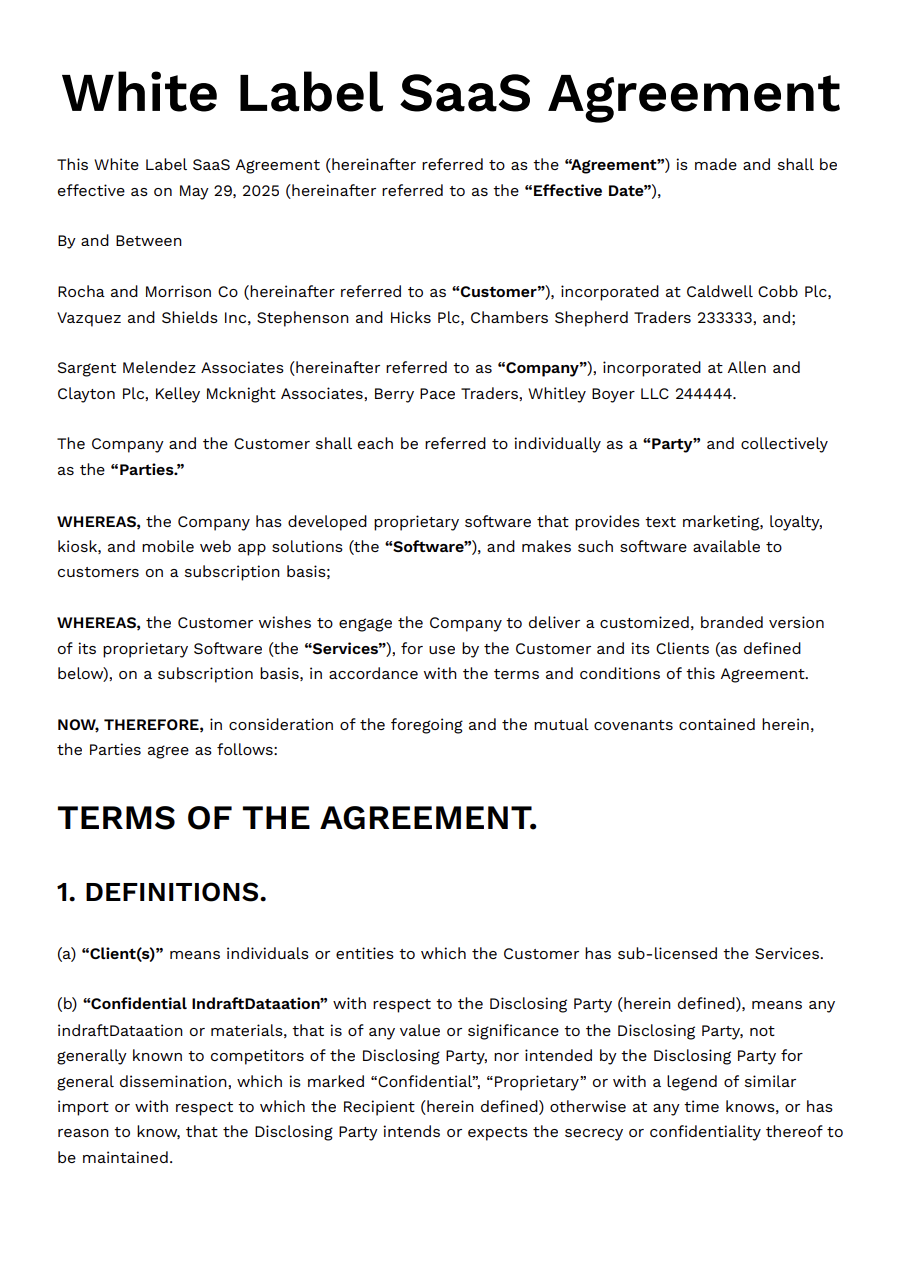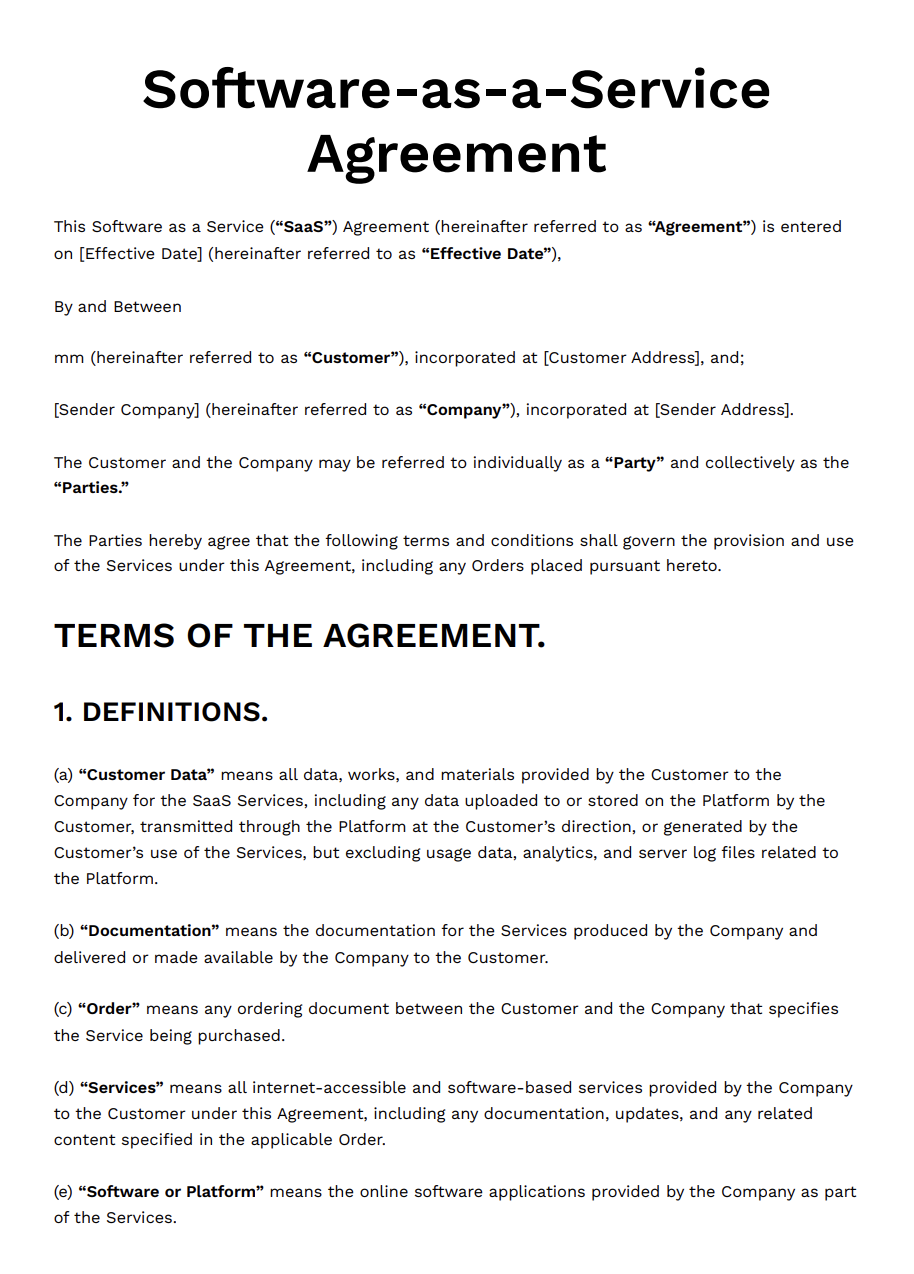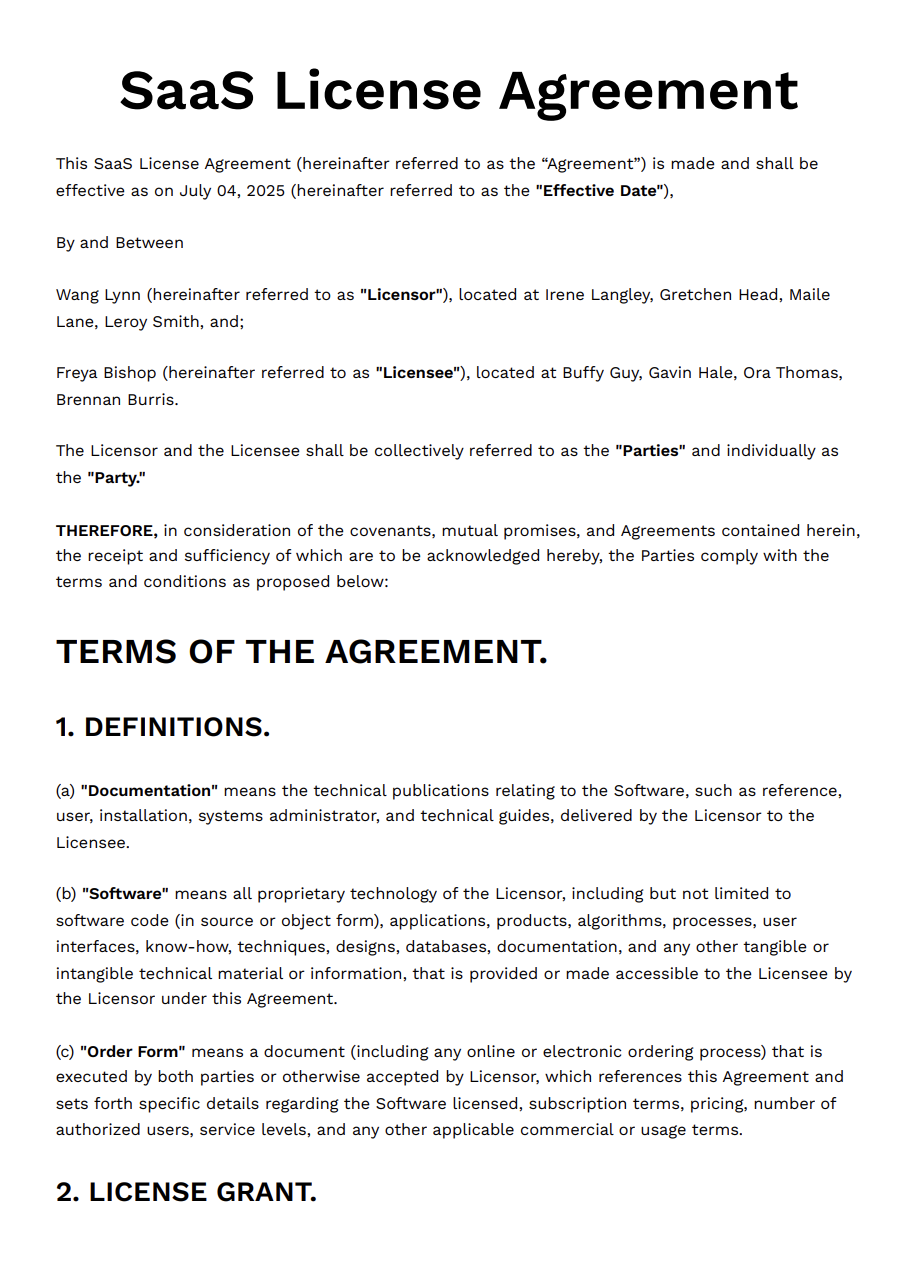Preview the template:
SaaS Service Level Agreement: how-to guide
A Service Level Agreement (SLA) sets clear rules and expectations, helping both sides communicate better and take responsibility, which reduces the chances of problems during service delivery.
What is a SaaS Service Level Agreement (SLA)?
A SaaS Service Level Agreement outlines the specific commitments a software provider makes to its customers regarding the performance and availability of its cloud-based services.
These agreements typically cover aspects such as uptime guarantees, support response times, maintenance schedules, data handling practices, and the division of intellectual property and ownership rights between the provider and the user.
Understanding the Core Components of a SaaS Service Level Agreement.
A SaaS Service Level Agreement (SLA) usually includes the following core parts:
- Uptime Guarantee: The percentage of time the service is expected to be available, commonly 99.9% or higher.
- Response and Resolution Times: How quickly the provider responds to support requests and how fast issues are resolved, often based on severity levels.
- Support Availability: When support is available (for example, 24/7 or business hours).
- Backup and Recovery: How data is backed up and how long it would take to recover it after an issue.
- Scheduled Maintenance: Notification rules and timing for planned downtime or system upgrades.
- Service Credits: Compensation or discounts provided if the SLA is not met.
How Does an SLA Handle Service Problems and Customer Support?
An SLA clearly defines what happens when there is a service issue and how customers can get help:
- Incident Response: The SLA sets response times based on how serious the issue is. For example, a critical outage might get a response within 1 hour, while a minor bug may take longer.
- Support Channels: It lists how support can be reached—email, ticket system, or live chat—and during which hours.
- Escalation Process: If an issue isn't resolved quickly, the SLA describes how it will be escalated to higher-level support or engineering.
- Communication Expectations: The SLA explains how and when updates will be given during an incident.
Why Is Clear Communication Important When Writing an SLA?
Clear communication builds trust and prevents confusion. A strong SLA uses plain, easy-to-understand language while keeping technical terms where needed. This helps both sides:
- Avoid Misunderstandings: If terms are too vague or overly legal, expectations may differ.
- Set Realistic Goals: Providers can only commit to what their systems and teams can support.
- Create Accountability: When everyone understands the terms, it’s easier to measure performance and fix problems.
Transparency in an SLA also means being honest about limits—such as excluding third-party outages or customer-side issues from uptime guarantees.
How Does Tracking and Compliance Keep an SLA Effective?
To make an SLA work in real life, it must be monitored and reviewed regularly. Here’s how:
- Monitoring Tools: Services are tracked using uptime monitoring, error logging, and performance dashboards.
- Compliance: Providers must follow laws and standards like GDPR, HIPAA, or ISO 27001. These are often mentioned in the SLA to show commitment to data protection and security.
- Reports and Audits: Many SLAs include regular performance reports. Some allow the customer to request an audit or review results during a quarterly meeting.
- Improvements Over Time: Regular reviews help update the SLA as the service grows or changes.
Without monitoring and compliance, an SLA is just words. With them, it becomes a reliable agreement both sides can depend on.
SaaS Service Level Agreement Template
Use a SaaS service level agreement template to define how a service will be provided and supported. This helps both the provider and the customer understand what to expect.
Edit Template OnlineStart creating at $14/month or $108/year for unlimited documents
No sign-up required
Fill your responses and complete your document
Maintained regularly
FAQs
How to use this template?
You can use this template by editing it online in our contract builder, once you're satisfied with the content, you can download it as a PDF document. Or you can download the Word version to edit offline.
How often do you update this SLA template?
We regularly maintain and update this SLA template based on customer feedback and changes in applicable laws to ensure it remains compliant with industry standards and legal requirements.
Is the SLA enforceable in international contracts?
It can be, but enforceability depends on the governing law and jurisdiction clause in your Master Services Agreement (MSA). Make sure these clauses are compatible with your customer's legal environment.


